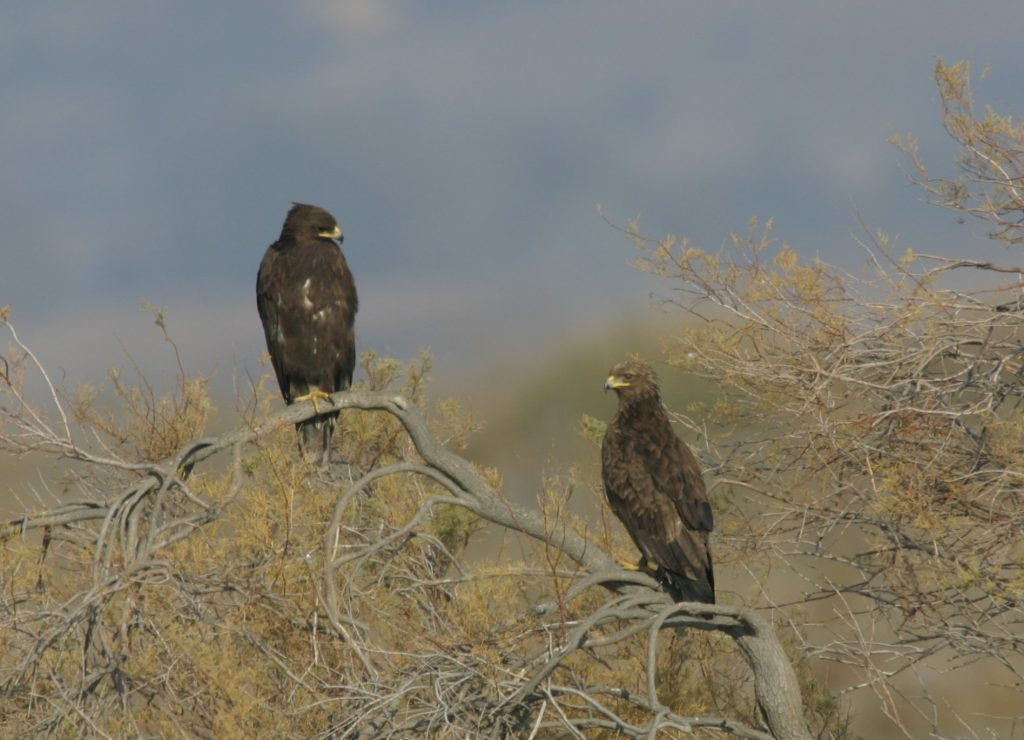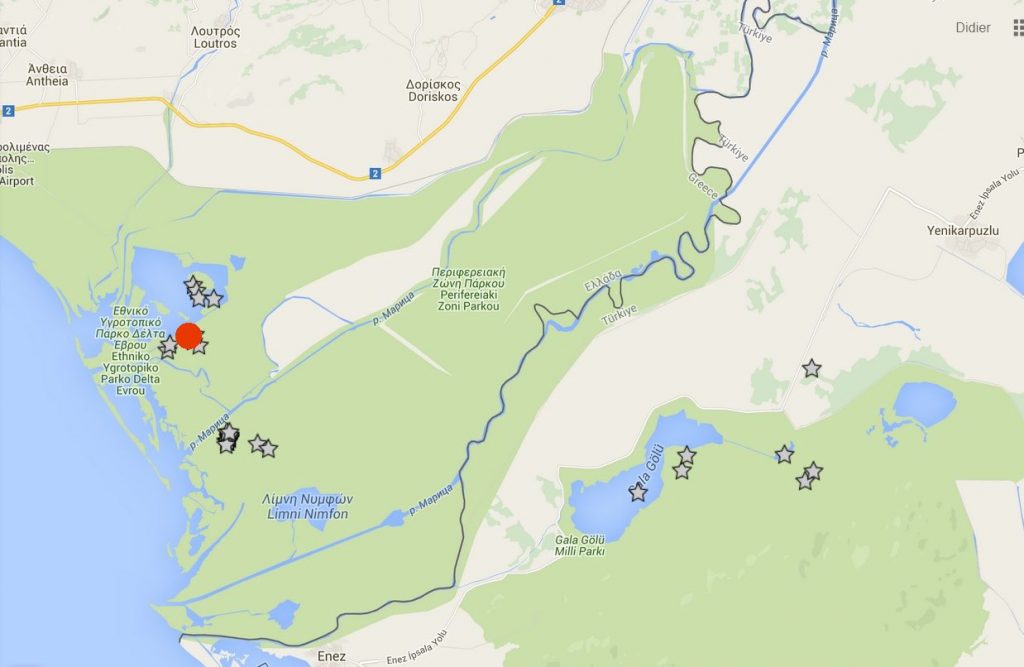It freezes this Monday 8 February 2016 at the border between Europe and Turkey. The day is dedicated to count waterfowl – swans, geese, ducks, waders and gulls – and raptors wintering in the National Park of the Evros Delta. Among these have been observed today: 2 White-tailed Eagles, two Imperial Eagles, about 20 Greater spotted Eagles, sixty Common Buzzards and as many Marsh Harriers, a Peregrine Falcon, about 15 Kestrels, a dozen European Sparrowhawks. The two Rough-legged Buzzards discovered the day before yesterday were no longer found.

Bewick’s Swans are of course always under close monitoring and the follow up of the arrival to the roosts starts at 16:00 from the dyke that separates the Drana Lagoon from the marshy area of Dimitriades. When arriving 7 Mute Swans were sleepy in the middle of the flooded area where past Friday 8500 swans from three species where gathering together. No movement or so until almost 17:15 when the young Imperial Eagle observed in the morning flies over the area towards the hills of Loutros where it roosts. 17:30, arrival of the first 8 Bewick’s Swans. The following 12 arrive at 17:35. At 17:46 p.m., it’s raining Ruddy Shelducks. 17:58 p.m. a flock of 28 Bewick’s Swans comes gently to rest on the water. 18:08 p.m., it is completely dark, end of counting. The total is doing 48 Bewick’s Swans. Yesterday they were in 1240, before yesterday 1400 and Friday 8400! Have the Bewick’s Swans wintering in the Evros Delta already started their spring migration to the tundra of Siberia?
The data transmitted by the swan 854X equipped with a GPS transmitter in Yamal are helping to understand these differences. Analysis of 854X positions at 02:00 am indicates that there is more of that one swan roost in the Evros Delta. Between 12 December 2015, the date of his arrival in Greece and 12 January 2016, 854X has used 8 different roosts, 4 located in Greece and 4 in Turkey. During this first month of presence, 854X slept 23 times in Greece and 8 in Turkey. So there is clearly a different distribution of swans between the roosts and between the nights. It is unknown why exactly, but we can assume that the weather is an important factor. This is one explanation to the variations in counts.

Another parameter explaining these disparities between the number of swans counted at Dimitriades roost is the timing of leaving foraging site at the end of the days. GPS locations of 854X and direct observations with a telescope indicate that foraging site are almost exclusively located in the Turkish part of the Delta. By the way a visit is planned in this area during the coming days.
Today 854X was still in Turkey at 19:00. Whereas it is dark at 18:10, so it arrived in the dark at the roost and has accordingly not been detected and therefore not been counted. Yesterday, 7 February, it was located at 19:00 7 km east of the roost; most likely flying. The same that today: he came to the roost in the dark and could not be recorded. Day before yesterday he was still in Turkey at 18:00 and was at the roost at 19:00. He returned earlier that day but still after or just after dark. And on 5 February, the story is already known, 854X and thousands of fellows spent all day in the roost of Dimitriades. They just have not been feeding this day. This most probably allowed the record count.
All this did not help to resight the swan with the yellow neckband observed, but not decrypted, on 5 February. It cannot more be found!
